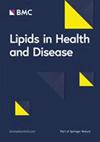Diagnostic accuracy of Cardiochek® PA point-of-care testing (POCT) analyser with a 3-in-1 lipid panel for epidemiological surveys
IF 3.9
2区 医学
Q2 BIOCHEMISTRY & MOLECULAR BIOLOGY
引用次数: 0
Abstract
Point-of-care testing (POCT) is commonly used in epidemiological surveys due to its various advantages, such as portability and immediate test results. The CardioChek® PA analyser 3-in-1 lipid panel measures total cholesterol (TC), triglyceride (TG), high-density lipoprotein (HDL) cholesterol and low-density lipoprotein (LDL) cholesterol. This study tested the reliability and diagnostic accuracy of the CardioChek® PA analyser using a 3-in-1 lipid panel. A cross-sectional study design with quota sampling was used. A total of 203 respondents aged 18 years and above from a research centre in the Ministry of Health, Malaysia, were recruited. Venous blood was sent to the laboratory and tested with Siemens Atellica CH, while a POCT analyser was used for capillary blood measurements. Intraclass coefficient correlation (ICC) analysis was employed to determine the agreement between capillary and venous blood parameters. The diagnostic performance of the evaluated tests was evaluated using STATA version 12. The agreement between capillary and laboratory venous blood was moderate (0.64–0.67) for TC and HDL, good (0.75) for LDL and excellent (0.91) for TG). The sensitivity, specificity, positive predictive value (PPV) and negative predictive value (NPV) were as follows: TC, 57.1%, 94.3%, 92.3% and 64.8%; TG, 76.0%, 100%, 100%, and 96.6%; HDL, 96.2%, 83.2%, 47.2% and 99.3%; and LDL, 81.0%, 100%, 100% and 68.3%, respectively. The CardioChek® PA analyser showed acceptable diagnostic accuracy for screening high-risk individuals more often in places where laboratories are inaccessible. It could also be used in clinical settings where patients would benefit from swift treatment decisions.用于流行病学调查的带有 3 合 1 血脂面板的 Cardiochek® PA 床旁检测 (POCT) 分析仪的诊断准确性
床旁检测(POCT)因其便携性和检测结果即时性等多种优势,在流行病学调查中被广泛使用。CardioChek® PA 分析仪三合一血脂组合可测量总胆固醇(TC)、甘油三酯(TG)、高密度脂蛋白(HDL)胆固醇和低密度脂蛋白(LDL)胆固醇。本研究使用三合一血脂组合测试了 CardioChek® PA 分析仪的可靠性和诊断准确性。研究采用了配额抽样的横断面研究设计。在马来西亚卫生部的一个研究中心共招募了 203 名 18 岁及以上的受访者。静脉血被送往实验室,用西门子 Atellica CH 进行检测,而毛细血管血的测量则使用 POCT 分析仪。采用类内系数相关性(ICC)分析来确定毛细血管和静脉血参数之间的一致性。使用 STATA 第 12 版对所评估的检测项目的诊断性能进行了评估。毛细血管和实验室静脉血的 TC 和 HDL 的一致性为中等(0.64-0.67),LDL 为良好(0.75),TG 为优秀(0.91)。灵敏度、特异性、阳性预测值(PPV)和阴性预测值(NPV)如下:TC、57.1%、94.3%、92.3% 和 64.8%;TG、76.0%、100%、100% 和 96.6%;HDL、96.2%、83.2%、47.2% 和 99.3%;LDL、81.0%、100%、100% 和 68.3%。CardioChek® PA 分析仪显示了可接受的诊断准确性,可以在实验室无法到达的地方更频繁地筛查高危人群。它还可用于临床环境,使患者受益于迅速的治疗决策。
本文章由计算机程序翻译,如有差异,请以英文原文为准。
求助全文
约1分钟内获得全文
求助全文
来源期刊

Lipids in Health and Disease
生物-生化与分子生物学
CiteScore
7.70
自引率
2.20%
发文量
122
审稿时长
3-8 weeks
期刊介绍:
Lipids in Health and Disease is an open access, peer-reviewed, journal that publishes articles on all aspects of lipids: their biochemistry, pharmacology, toxicology, role in health and disease, and the synthesis of new lipid compounds.
Lipids in Health and Disease is aimed at all scientists, health professionals and physicians interested in the area of lipids. Lipids are defined here in their broadest sense, to include: cholesterol, essential fatty acids, saturated fatty acids, phospholipids, inositol lipids, second messenger lipids, enzymes and synthetic machinery that is involved in the metabolism of various lipids in the cells and tissues, and also various aspects of lipid transport, etc. In addition, the journal also publishes research that investigates and defines the role of lipids in various physiological processes, pathology and disease. In particular, the journal aims to bridge the gap between the bench and the clinic by publishing articles that are particularly relevant to human diseases and the role of lipids in the management of various diseases.
 求助内容:
求助内容: 应助结果提醒方式:
应助结果提醒方式:


